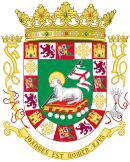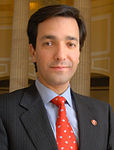This article includes a list of general references, but it lacks sufficient corresponding inline citations. (July 2010) |
| ||||||||||||||||||||
|
| ||||||||||||||||||||
Gubernatorial election | ||||||||||||||||||||
| ||||||||||||||||||||
 Results by municipality Fortuño: 40–50% 50–60% 60–70% Acevedo Vilá: 40-50% | ||||||||||||||||||||
| ||||||||||||||||||||
Resident Commissioner election | ||||||||||||||||||||
| ||||||||||||||||||||
 Results by municipality Pierluisi: 40–50% 50–60% 60–70% Salazar Jr.: 40-50% 50-60% | ||||||||||||||||||||
 |
|---|
General elections were held in Puerto Rico on Tuesday, November 4, 2008, to elect the officials of the government that would serve for the next four years, most notably the Governor of Puerto Rico.
The gubernatorial election was won by incumbent Resident Commissioner Luis Fortuño of the New Progressive Party (PNP), who defeated incumbent governor Aníbal Acevedo Vilá of the Popular Democratic Party (PPD) by 53% to 41%. Most other positions were won by PNP candidates, with Pedro Pierluisi winning the election for Resident Commissioner, and the party winning a majority of seats in the Senate and the House of Representatives.
The elections occurred after one term of what was called "shared government", as a result of the 2004 elections. Because of this, the island had a Governor from one party (Acevedo Vilá), while the opposing party held a majority in the Senate and the House of Representatives. The struggles faced by the opposing parties attempts at cooperation, mixed with the global economic crisis, paved the campaign for this elections. Also, Acevedo Vilá was facing criminal accusations at the time.[1]
Fortuño was sworn in as Governor of Puerto Rico on January 2, 2009.
- ^ El impacto electoral de Barbadoro Archived June 5, 2012, at the Wayback Machine on El Nuevo Día; Colón Dávila, Javier



